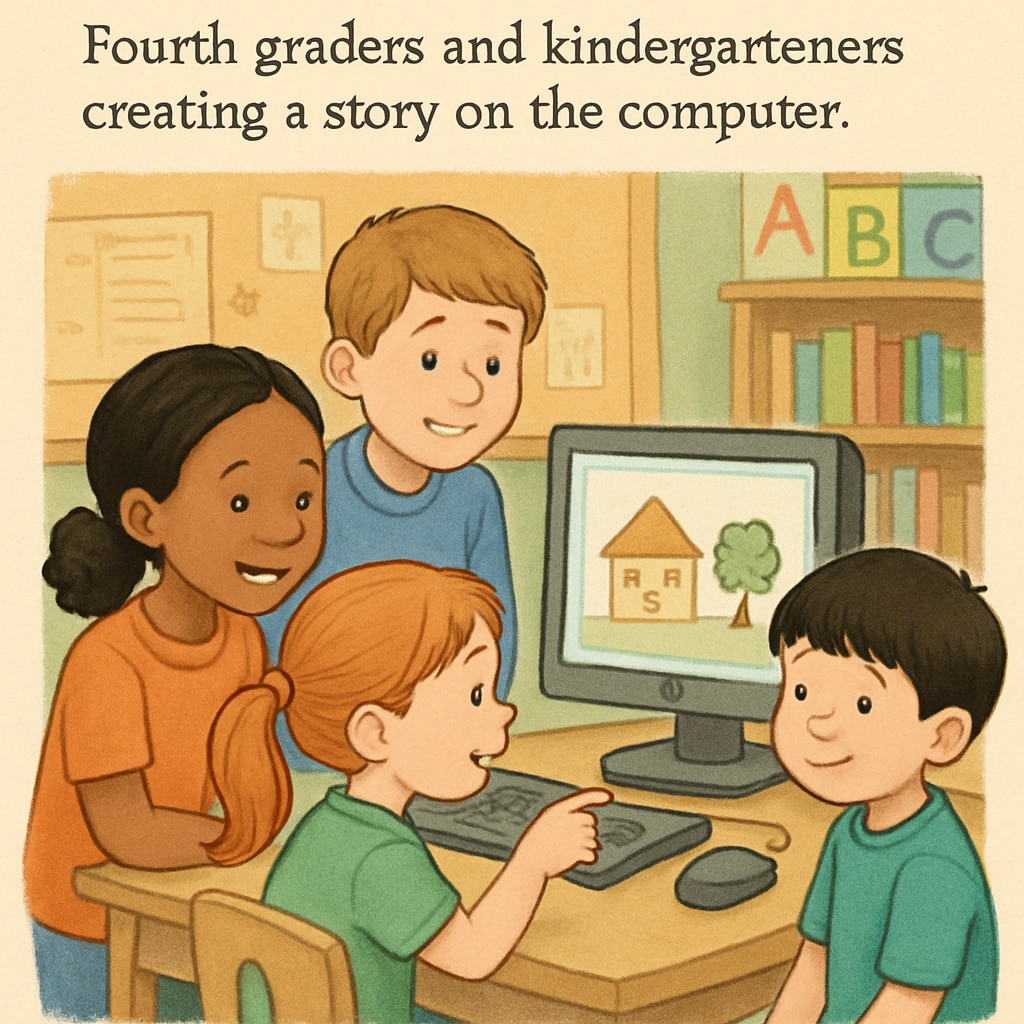Integrating a structured kindergarten buddy program between fourth-grade students and young learners can create an enriching educational environment for both age groups. These programs, particularly those centered around computer activities, accommodate varying literacy levels while fostering collaboration, technical skills, and social interactions. By blending educational goals with fun digital tools, students can build meaningful connections and enhance their learning journeys.
Using Technology to Bridge the Literacy Gap
One of the greatest challenges in cross-age buddy programs is addressing the literacy gap. Kindergarteners are just beginning their journey into reading and writing, while fourth graders have already developed relatively advanced skills. Computer activities provide an excellent platform to bridge this gap, offering customizable and engaging tools that cater to diverse literacy levels.
- Interactive Story Creation: Fourth graders can guide kindergarteners in creating digital stories using simple storyboarding apps. This activity encourages creativity while helping younger students recognize letters and build sentences.
- Educational Games: Pair students to play collaborative learning games. Websites like Starfall offer interactive literacy-based games that suit both age groups.
- Basic Coding Exercises: Platforms like Code.org provide beginner-friendly coding puzzles that fourth graders can teach kindergarteners, boosting problem-solving skills for both.

Fostering Teamwork and Social Skills
Beyond academic growth, a key objective of these programs is to develop social and teamwork skills. Engaging in shared computer activities gives students the opportunity to practice communication, patience, and empathy.
Examples of activities that promote these soft skills include:
- Peer Tutoring: Fourth graders teach kindergarteners how to navigate educational software, which builds leadership skills while fostering trust and confidence.
- Digital Art Collaboration: Use simple drawing tools like Tux Paint to create collaborative artworks. Older students can help with technical aspects while younger ones contribute creatively.
- Multimedia Presentations: Encourage pairs to create a short slideshow about their shared interests using tools like Google Slides. This activity enhances communication and presentation skills.
These activities emphasize teamwork and provide older students with a sense of responsibility, while younger students benefit from mentoring and support.

Ensuring Flexibility and Engagement
When designing computer-based buddy activities, flexibility is key. Children at different stages of development have unique learning needs and attention spans. Activities should be structured but adaptable, allowing pairs to explore and learn at their own pace.
Some tips for ensuring engagement include:
- Choose age-appropriate software with intuitive interfaces.
- Incorporate frequent breaks to prevent screen fatigue.
- Allow students to choose projects that align with their interests, such as games, art, or storytelling.
By maintaining a balance between structure and freedom, educators can ensure that both age groups remain engaged and motivated throughout the program.
The Long-Term Benefits of Cross-Age Buddy Programs
These innovative kindergarten buddy programs offer more than just immediate educational benefits. They help children develop lifelong skills such as teamwork, digital literacy, and empathy. Fourth graders gain leadership experience, while kindergarteners build confidence and foundational skills.
In addition, these programs create a sense of community within schools, fostering positive relationships between students of different ages. As a result, both groups emerge from the program with not only improved academic skills but also a greater understanding of collaboration and mutual respect.
In conclusion, incorporating computer-based activities into cross-age buddy programs is an effective way to bridge the gap between kindergarten and fourth grade. By nurturing teamwork, technical skills, and social development, these programs lay the foundation for a more connected and inclusive learning environment.
Readability guidance: Short paragraphs and lists summarize key points. Transition words (e.g., however, therefore, for example) are used to maintain a smooth flow. Passive voice is minimized to ensure clarity and engagement.


